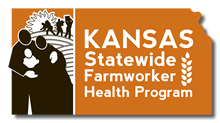December 6, 2022
The Community Health Corner

The National Extension Framework for Health Equity and Well-being recommends using community development strategies with mutually reinforcing and targeted health programs to ensure that every person has the opportunity to attain their full health potential. The following tools and resources can be used to improve health access, equity and well-being to achieve Healthy Kansas 2030 objectives and contribute to the nation’s Healthy People 2030 outcomes.
READ NOW: A Stanford University study reports that the stress of pandemic prematurely aged the brains of teenagers by at least three years and in ways similar to changes observed in children. According to the study the brains of adolescents who were assessed after the pandemic shutdowns ended appeared several years older than those of teens who were assessed before the pandemic. Until now, such accelerated changes in “brain age” have only been seen in children experiencing chronic adversity, such as neglect and family dysfunction. It is not clear whether youth who lived through the pandemic and its shutdowns are comparable psychobiologically to their age- and sex-matched peers assessed before the pandemic.
REGISTER NOW: The final webinar in the 2022 Navigating Rural Health Resources series by the Kansas Office of Primary Care and Rural features the Kansas Statewide Farmworker Health Program. Register here for the December 13, 2022, 12:30 - 1:30 p.m. webinar. The Kansas Statewide Farmworker Health Program (KSFHP) works to assure access to primary health care services for low-income and medically underserved migratory and seasonal farmworkers (MSFW) and for persons eligible for services essential to the diagnosis and treatment of tuberculosis.
LEARN NOW: A recent Kansas Health Institute (KHI) report explores why there aren’t more Kansans that have health insurance. People who may qualify for private or public coverage can often be uninsured or underinsured. The KHI report features an infographic that provides a high-level overview of insurance coverage for 2,896,361 Kansans in 2021. The November 17 report is part of KHI’s Annual Insurance Update.
For more information, contact Elaine Johannes, ejohanne@ksu.edu; and Stephanie Gutierrez, smgutier@k-state.edu.